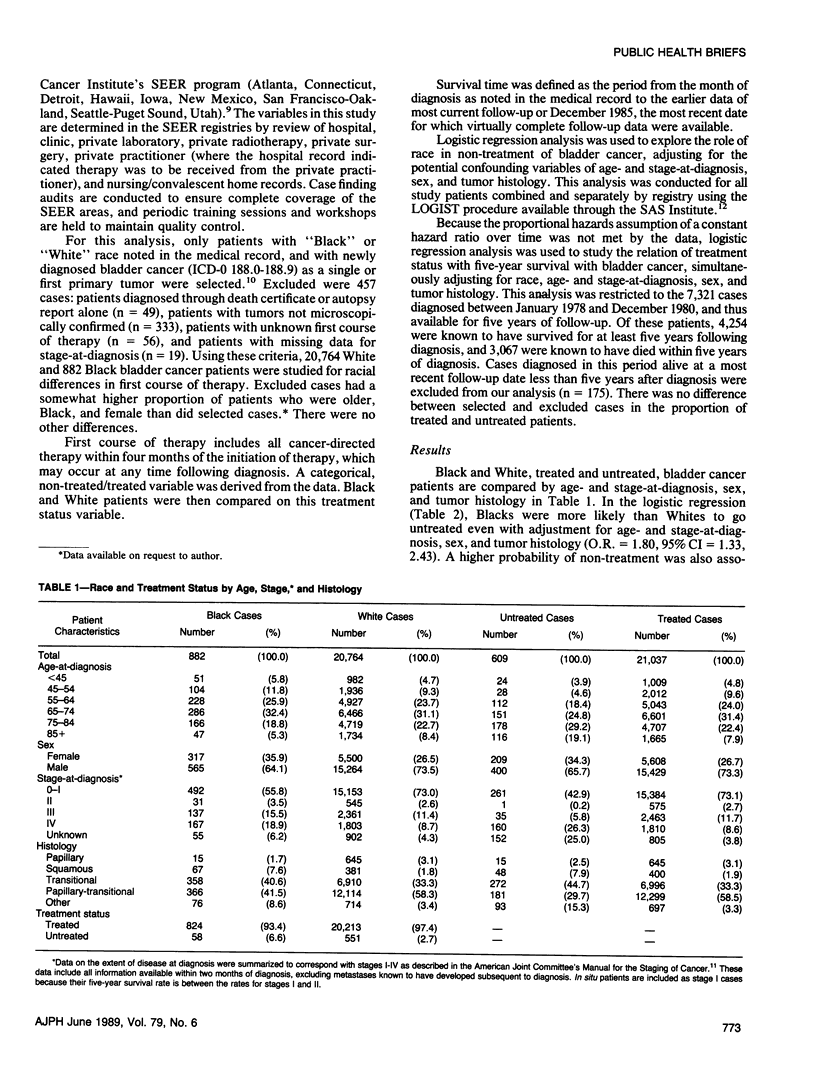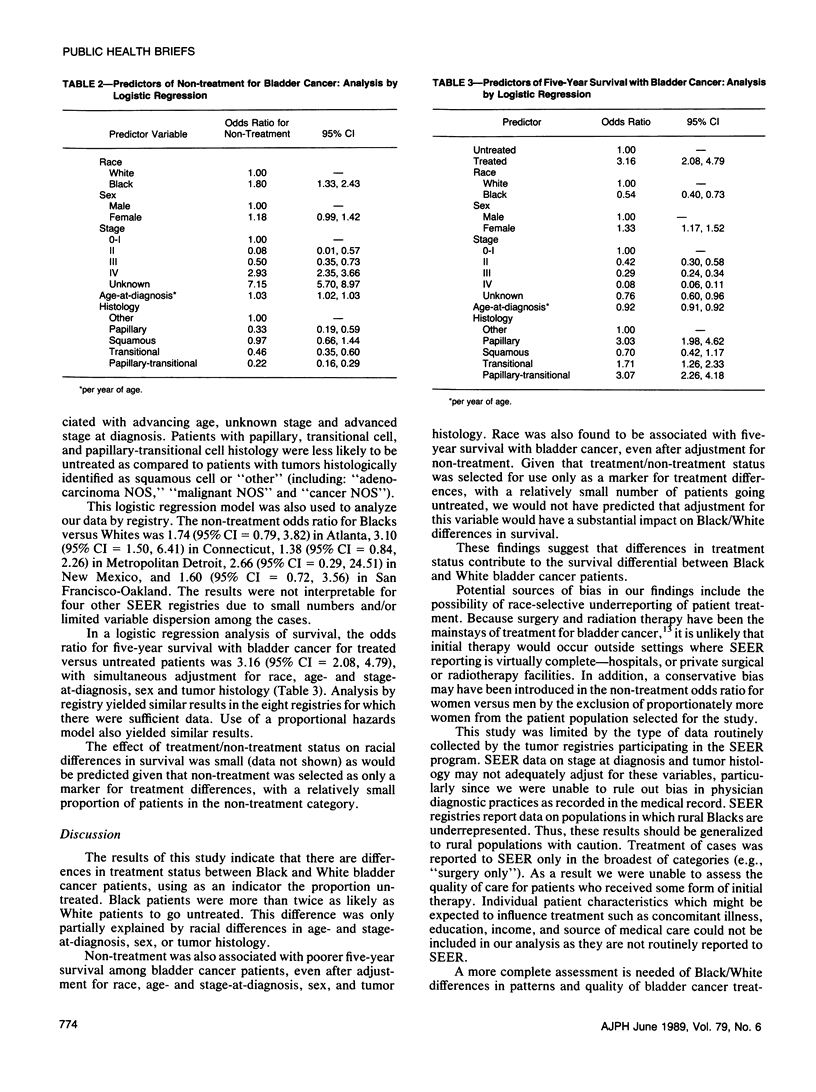Abstract
Analysis of 20,764 White and 882 Black bladder cancer patients diagnosed during 1978-85 indicates that Black patients were more likely than White patients to go untreated following diagnosis after adjustment for age- and stage-at-diagnosis, sex, and tumor histology (OR = 1.80, 95% CI = 1.33, 2.43). Treatment status was found to be a significant predictor of five-year survival after adjustment (treated/untreated odds ratio = 3.16, 95% CI = 2.08, 4.79). Results suggest that differences in initial therapy may contribute to the survival differential between Black and White bladder cancer patients.
Full text
PDF



Selected References
These references are in PubMed. This may not be the complete list of references from this article.
- Axtell L. M., Myers M. H. Contrasts in survival of black and white cancer patients, 1960-73. J Natl Cancer Inst. 1978 Jun;60(6):1209–1215. doi: 10.1093/jnci/60.6.1209. [DOI] [PubMed] [Google Scholar]
- Hankey B. F., Myers M. H. Black/white differences in bladder cancer patient survival. J Chronic Dis. 1987;40(1):65–73. doi: 10.1016/0021-9681(87)90097-x. [DOI] [PubMed] [Google Scholar]
- Page W. F., Kuntz A. J. Racial and socioeconomic factors in cancer survival. A comparison of Veterans Administration results with selected studies. Cancer. 1980 Mar 1;45(5):1029–1040. doi: 10.1002/1097-0142(19800301)45:5<1029::aid-cncr2820450533>3.0.co;2-3. [DOI] [PubMed] [Google Scholar]
- Young J. L., Jr, Ries L. G., Pollack E. S. Cancer patient survival among ethnic groups in the United States. J Natl Cancer Inst. 1984 Aug;73(2):341–352. doi: 10.1093/jnci/73.2.341. [DOI] [PubMed] [Google Scholar]


